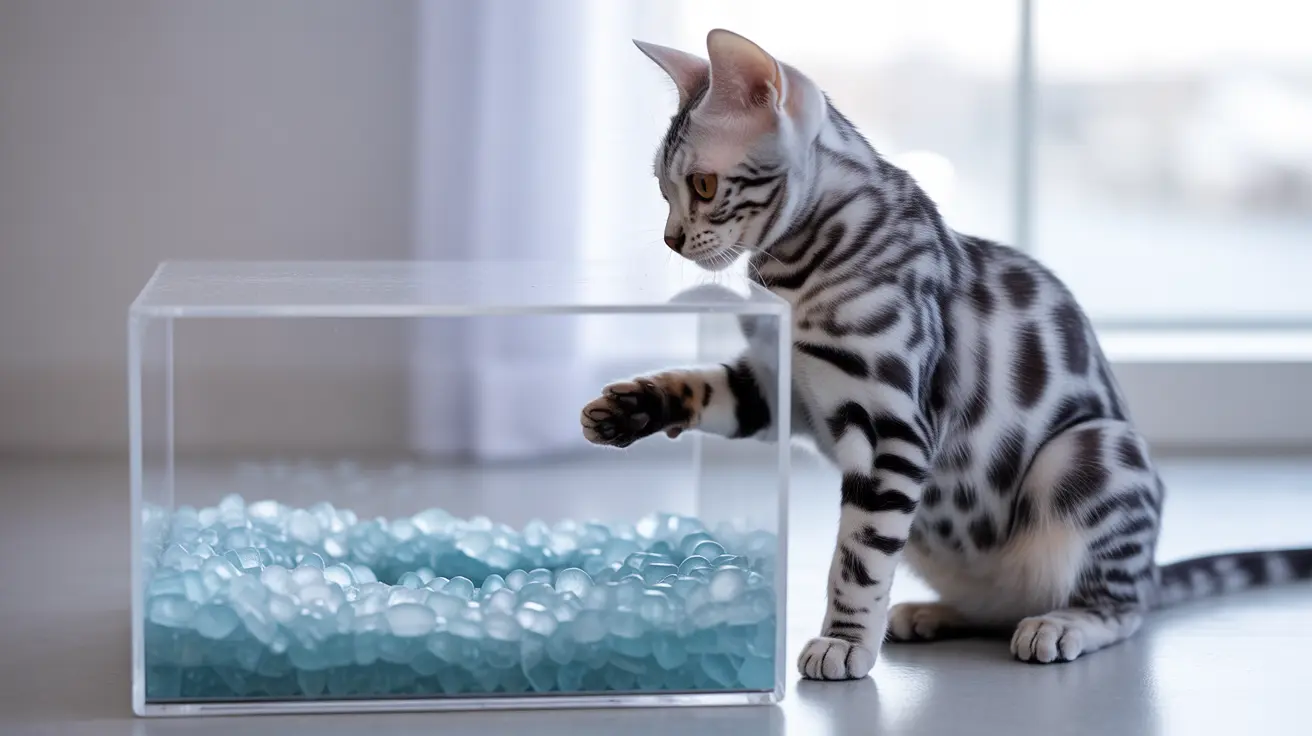Understanding Crystal Cat Litter Composition
Crystal cat litter is primarily made from silica gel, but not all silica is created equal. The key distinction lies in the type of silica used: amorphous versus crystalline.
Amorphous Silica Gel: The Safe Choice
Most commercial crystal cat litters contain amorphous silica gel, which has been extensively tested and deemed safe for household use. This type of silica is the same material found in those small "DO NOT EAT" packets in product packaging, used to control moisture and maintain freshness.
Amorphous silica gel is non-toxic and has several advantages:
- Superior moisture absorption
- Excellent odor control
- Minimal dust production
- Long-lasting performance
Crystalline Silica: The Type to Avoid
Crystalline silica, found in some clay-based litters, poses significant health risks when inhaled. This form can cause respiratory issues and has been linked to serious conditions like silicosis. It's crucial to check product labels and avoid litters containing crystalline silica.
Benefits of Crystal Cat Litter
When choosing the right crystal cat litter, you'll find several compelling advantages:
Superior Absorption and Odor Control
Crystal cat litter can absorb up to 40 times its weight in liquid over its lifespan, making it highly efficient at moisture control and odor elimination. This exceptional absorption capacity means one bag can last significantly longer than traditional clay litter.
Dust-Free Environment
Quality crystal cat litter produces minimal dust compared to clay alternatives, creating a cleaner environment for both cats and their owners. This feature is particularly beneficial for cats and humans with respiratory sensitivities.
Safety Considerations and Best Practices
Proper Usage Guidelines
To ensure the safest experience with crystal cat litter:
- Scoop solid waste daily
- Stir the crystals to distribute moisture evenly
- Replace litter completely every 3-4 weeks
- Maintain proper ventilation in the litter box area
Monitoring Your Cat's Behavior
While crystal cat litter is generally safe, it's important to watch for any unusual behavior:
- Excessive litter consumption
- Signs of digestive discomfort
- Respiratory issues
- Changes in litter box habits
Frequently Asked Questions
Is crystal cat litter made with amorphous silica gel safe for my cat and family?
Yes, crystal cat litter made with amorphous silica gel is safe for both cats and humans when used as directed. It's non-toxic and has been approved for household use by regulatory agencies.
What are the health risks of crystalline silica in some cat litters compared to amorphous silica?
Crystalline silica can cause serious respiratory issues like silicosis when inhaled, while amorphous silica gel is considered non-toxic and safe. Always check labels to ensure your litter contains amorphous silica gel.
Can my cat get sick if they eat crystal cat litter made from silica gel?
While amorphous silica gel is non-toxic, consuming large amounts can cause mild gastrointestinal upset. If you notice your cat eating litter, consult your veterinarian and consider alternative litter options.
How does crystal cat litter control odor and moisture better than clay litter?
Crystal cat litter's unique silica gel structure can absorb up to 40 times its weight in liquid and effectively traps odors at a molecular level, making it more efficient than traditional clay litters.
What should I look for on the label to ensure my cat litter contains safe amorphous silica?
Look for terms like "amorphous silica gel" or "synthetic amorphous silica" on the label. Avoid products that don't specify the type of silica or mention crystalline silica content.
With proper understanding and careful selection of crystal cat litter, you can provide a safe and effective litter solution for your feline companion while enjoying the benefits of superior odor control and reduced maintenance.






